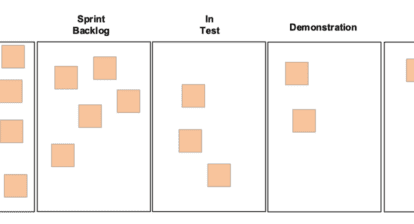 Budget planning takes your project management to a different level of efficiency and transparency. Research conducted by McKinsey & Co. and the University of Oxford reveals that half of all large IT projects run 45 percent over budget and seven percent over time. These overruns occur while delivering 56 percent less value. Yikes!
Budget planning takes your project management to a different level of efficiency and transparency. Research conducted by McKinsey & Co. and the University of Oxford reveals that half of all large IT projects run 45 percent over budget and seven percent over time. These overruns occur while delivering 56 percent less value. Yikes!
Many of these problems with IT implementations arise from project budgets that are not managed properly. In fact, the Project Management Institute indicated that a large number of the issues today’s managers face, such as runaway costs, low-quality deliverables, and poorly motivated teams, can be traced directly to the use of inappropriate budgeting and management techniques. In their book, Dynamic Project Management, Kezsbom, Schilling, and Edward identified three areas that are detrimental to successful project management. These areas include poor financial estimates, estimates based on guesses, and poor time management. The Association for Project Management found similar results, identifying the estimation of costs, the setting of an agreed budget, and management of actual and forecast expenses against that budget as areas of breakdown in many projects.
A resilient budget for your project incorporates all these areas into the management process of your projects. You can initiate this planning process by first identifying the end goal and final budget. The plan should include an acknowledged outcome, cost, and time. This estimate of costs may already be established, or you may have to take time to research historical expenses to start the process. The goal is to be realistic in your estimation of the time and budgetary resources.
Once you have established the budget, you can design a protocol that helps manage actual costs and forecast expenses throughout the life of the project. A Work Breakdown Structure helps to organize work into manageable units that identify who will do the job, when employees should complete the job, and what budget to maintain. This breakdown structure helps you establish the critical elements of the project before moving into the details. Arrange the deliverables in a way that considers the critical path of the project. Ask yourself questions such as:
- Do some activities need to take place before other activities?
- Is the employee available to work on a particular aspect of the project without conflict with another project?
- Are the timelines reasonable to the amount of work?
This visual representation of the project, along with cost indicators identified throughout the process, help to keep people, action items, and funding on track. Specific fiscal identifiers in the funding stream allow team members to monitor the funds needed for each objective and also track the amount of money used for each completed goal. This money trail helps to justify expenses, manage the budget, and also identifies needs and overages of the budget funds.
The organization of these deliverables at the beginning of the project also identifies potential conflicts. These conflicts include budgeting challenges, employee workload, activities overlap, and the ability for meeting goals. You optimize funding for the project when you streamline the process in a way that utilizes people, actions, and timing both efficiently and collaboratively. Consider the amount of time and money lost on employees waiting for someone to complete their part of the project, or having employees completing overlapping parts of the plan.
The use of a tool like Microsoft Project enhances your ability to identify and document essential steps. It also sets timelines for critical actions and the budget for each of these deliverables along with any sub-deliverables. The value added for investing time in creating a visual roadmap includes reduced costs, errors, and miscommunications about timelines, funding, and employee accountability. These tools help keep the budget management process from taking time and energy away from other aspects of the project that lend themselves to creativity and innovation.
A project management process also encourages critical thinking skills and sequential thinking in your employees. Employees look at the project as a whole instead of just at one part of the plan. This broader view helps better manage the project along with the budget. Employees gain ownership of the project including responsibility for fiscal spending within their segment of the project. This process of thinking becomes added value to leaders who monitor multiple projects and people. Project leaders are better able to track progress and monitor funding when presented with an overview of the complete project.
This managing style keeps multi-tasking accurate and efficient projects is especially valuable in today’s fast-paced society. Having a project management system that tracks ongoing units gives all members of the project improved movement between silos in project work. You are also better able to generate reports in real time.
Budget planning contains many ins and outs for project management. The goal is to find a process that keeps your projects running successfully on budget and on time. I’d love to hear from you. What budgeting tips do you, as a project manager, find most useful?
Related Content
Webinars (watch for free now!):
Advanced Tips for Resolving Resource Over/Underallocation
Resource Leveling: The Complete Series, Part 1
Articles:
Microsoft Project Resource Leveling Series & “Cheat Sheet”
Common Issues in PM: Over-booked and Mismanaged Resources
Understanding Resource Engagements in Microsoft Project 2016








Sonya Calef
Not every organization budgets the same way. For-profit, government, non-profit all handle budget planning on different cycles and through different methods. The PM has to speak to the Finance experts to understand how budgets are derived, what kind of cost accounting applies, and what kind of information Finance and management are even looking for. It’s not similar to balancing a cash register or check-book at all. Contractual constraints factor in. Regulatory and mandated deadlines factor in. Is the organization using earned value or not? I once had a manager tell me we need to do better project budget tracking, but they were not in the least bit interested in seeing variance. My question was “at what point do you want to know this is going or already is off track?” What is management’s maturity and expectation? Will there be resistance to the data you provide? If the PM is following PMI instructions by the book, but nobody understands or wants that information, what are your other choices and how do you respond. How much can you really educate up? These are topics in project management budgeting that I’d like to see more thoroughly addressed.
Jigs Gaton
Good read, thx! I think budgeting is one of my favorite parts of MSP. I love creating cost overrun charts & graphs and such things relating to money. But in my line of work (training international aid workers), I hardly ever find peeps interested in the money part of MSP. They mostly have their own discreet budgeting systems, or just use a homegrown Excel. I think that’s a shame, as the costing part of MSP is what makes it unique, when compared to the new breed of tools on the web – many of which don’t even include budgeting tools at all!
Lynette Reed
Sonya,
Thanks for your comments. I agree that PM has many layers that each organization has to personalize. I also think there is a subsequent discussion beyond the physical organization and monitoring of projects. I would call this secondary layer the soft skills of behavior and culture that surround the project. If you play a leadership role, then the soft skills goal is to make sure that everyone is working as harmoniously as possible with the project. This behavior requires effective communication and efficient documentation of the project so that people work seamlessly together. If you are the project manager who has leadership that is not providing cohesion, then the challenge is to keep the project on track as much as possible while maintaining your communications and documentation. Use this behavior and culture to keep the focus on the project and the goals instead of the frustrations.
Lynette Reed
Hi Jigs,
Any recommendations to share for new tools that include the costing part of MSP?